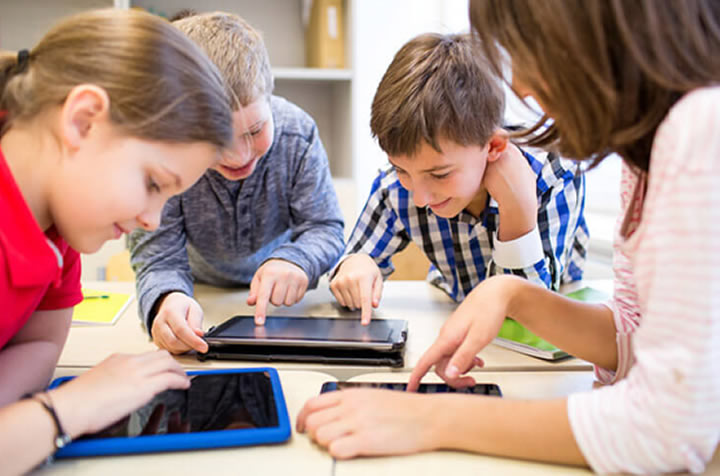Many scholars are lost since our education system enforces one single, simple, non-integrated blackboard teaching method. It took researchers years to finally reveal that learning and retaining information depends on the person’s ability to perceive information via sensory organs that are differently responsive.
Each person has their unique way of gathering the data and process to retrieve it later. While we still have the teacher-student approach, we are finally exploring different methods and approaches to make it easier for our budding scholars to enhance their school experience.
Visual aids, practical demonstrations, group discussions, and co-curricular activities demand that teachers and students work together for a well-defined, high-rise learning curve.
Different approaches for learning depends on the type of learner you are:
Visual learners

If you retain information better when you perceive knowledge and information visually, you are more of a visual learner. Visual learners tend to remember diagrams, charts, pictures perfectly but struggle with textbook notes and written information.
They might want to put their visual eyesight to optimum use by condensing study material into visually viable mind maps, flow charts, diagrams, color-coded pictures, or even doodles of their own.
They must distill all that they read, the complex ideas, names, facts, and data, into simple, visually perceivable glance types of rough drawings. They retain information effectively and sort through notes quicker than stacks of written material when faced with tests the next day.
Auditory learners

Aural or auditory learners listen. They are sensitive to hearing and auditory stimuli and often practice it by listening to the lectures while simultaneously repeating them to themselves or noting down the keywords. They learn by reading aloud, listening to their voice, explaining or simplifying concepts to themselves out loud and clear. You will find them attentive in class, paying attention to the teacher, hand gestures and all, and will be able to repeat what the teacher said word-for-word.
They are slow readers as it takes them a while to read and process the information perceived by their eyes and translated into understanding. But when they read out loud, they are listening more than reading. So group discussions, answering questions, repeating what they hear are good study techniques for them. Although visuals often add to the learning process but are not needed. Record, listen, repeat.
Kinesthetic learner

As the name refers, kinesthetic refers to a person’s body movements and actions. Kinesthetic learners focus more on the working of the world around them, they are interested in the mechanics of the knowledge, and that is how they learn. Also known as tactile learners, they like to experience/do things that fit the information in memory of performing it.
They excel at experiments, practicals, sports, and co-curricular activities. They struggle to understand blackboard explanations but quickly grasp when explained with a demonstration or act it out or with appropriate gestures, hand movements, and voice modulations.
The best approach for learning would be to experiment or get visual examples that they could observe independently; pacing while learning, games, or practical applications of theories would be the best.
Kinesthetic learners tend to be solo workers trying to do everything by themselves. They might waste a lot of time in the process. It is advisable to utilise study resources and techniques to not hit a hurdle that consumes time.
Reading/writing learners

These are textbook learners. They prefer to read and write for them to gain and retain information. While the teachers and professors are teaching, you will find them scrutinizing the blackboard or taking hasty class notes to process what their teachers are saying. They have a large vocabulary owing to the deliberate reading and writing method of learning.
They thrive in the traditional education system that mostly depends on these two mediums for their students to learn. They must focus on essays, articles, books/textbooks, journals, and diaries to improve their reading and writing skills.
Social learners
It refers to the learners who perform better when they have an active social interaction pertaining to the studies. They gather information in group discussions, group study sessions, doubt solving, and quizzing each other. They perceive learning as a social opportunity to exchange information and gain perspective on the subject matter.
They are interested in knowing the facts and opinions of other people, so they get an all-around truth. They get involved in group discussions and perform better in-class quizzes. They come off as amicable people with an appetite for conversation and are never afraid to voice their genuine doubts.
Solitary learners

With paper and ink as their weapons, solitary learners are experts in extracting information from various sources like textbooks/books, internet blogs and articles, videos, and audiobooks. They tend to have a fixed time, place, and schedule for studies, isolating themselves in their room or library for a specific period to learn and revise their day’s work.
Solitary revision allows you to focus on your shortcomings and work on them. Solitary learners also tend to get distracted more often as self-discipline is sometimes on the loose; also, doubt solving takes twice as long as the concepts have to be self-explained and revised.
Multimodal learners: when the person is comfortable with two or more learning approaches, may it be auditory combined with visual or visual combined with reading/writing, they are said to be multimodal learners. They depend on multiple methods to gain and retain information.
They make efforts to utilize the critical approaches for extensive learning. The advantage of being a multimodal learner is the elimination of restrictive phases of approaching information via one particular pathway and instead of having options to extract knowledge by any means possible.
Conclusion:
With well-defined learning methods and approaches, you will understand your way of studying for your school and grades. This, in turn, will help you implement study methods that are in sync with your learning approach. You do not have to confine yourself to a single pathway but rather explore techniques to get better at your studies. Remember, if it is difficult, you are probably doing it the long way. Find what best suits your needs by implementing result-driven study techniques in accordance with your learning approach.
